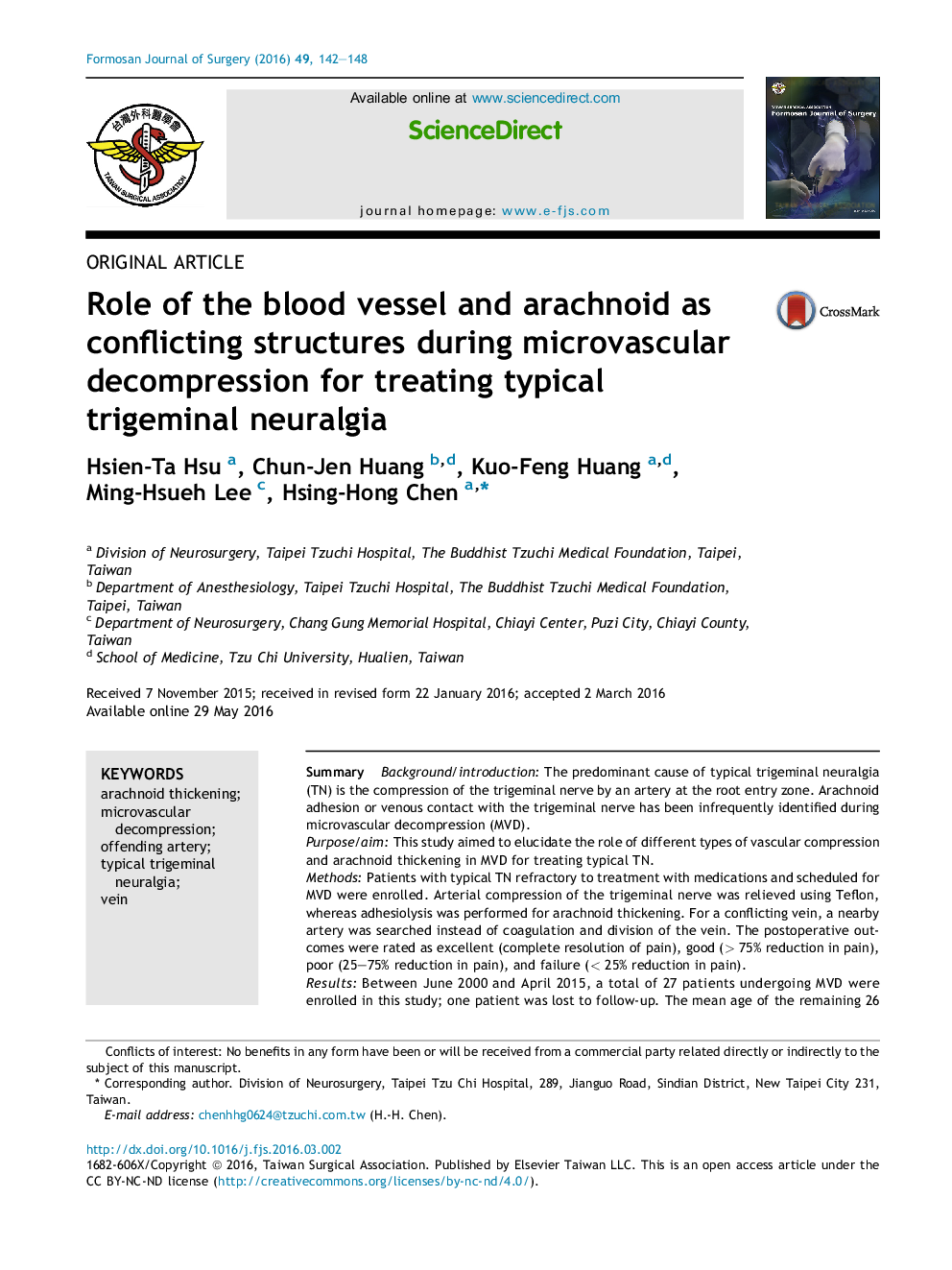| کد مقاله | کد نشریه | سال انتشار | مقاله انگلیسی | نسخه تمام متن |
|---|---|---|---|---|
| 4284907 | 1611886 | 2016 | 7 صفحه PDF | دانلود رایگان |
SummaryBackground/introductionThe predominant cause of typical trigeminal neuralgia (TN) is the compression of the trigeminal nerve by an artery at the root entry zone. Arachnoid adhesion or venous contact with the trigeminal nerve has been infrequently identified during microvascular decompression (MVD).Purpose/aimThis study aimed to elucidate the role of different types of vascular compression and arachnoid thickening in MVD for treating typical TN.MethodsPatients with typical TN refractory to treatment with medications and scheduled for MVD were enrolled. Arterial compression of the trigeminal nerve was relieved using Teflon, whereas adhesiolysis was performed for arachnoid thickening. For a conflicting vein, a nearby artery was searched instead of coagulation and division of the vein. The postoperative outcomes were rated as excellent (complete resolution of pain), good (> 75% reduction in pain), poor (25–75% reduction in pain), and failure (< 25% reduction in pain).ResultsBetween June 2000 and April 2015, a total of 27 patients undergoing MVD were enrolled in this study; one patient was lost to follow-up. The mean age of the remaining 26 patients was 57.4 ± 11.4 years (38–79 years), whereas the average duration of postoperative symptoms was 5.9 years (0.5–30 years). Significant differences in postoperative outcomes were noted for the arachnoid and artery compared with those for the vein as the conflicting structure, as evidenced by excellent and good outcomes (p = 0.005). Two operative complications were observed: cerebrospinal fluid rhinorrhea and deep wound infection. No mortality or cerebellar hemorrhage was observed during the follow-up period.ConclusionThe tightness of the junction between the offending artery and the trigeminal nerve may represent a major factor affecting different postoperative outcomes following MVD. An offending artery may be attached to the arachnoid thickening, resulting in a neurovascular compressive effect, whereas the role of venous contact as a cause of TN remains debatable.
Journal: Formosan Journal of Surgery - Volume 49, Issue 4, August 2016, Pages 142–148
